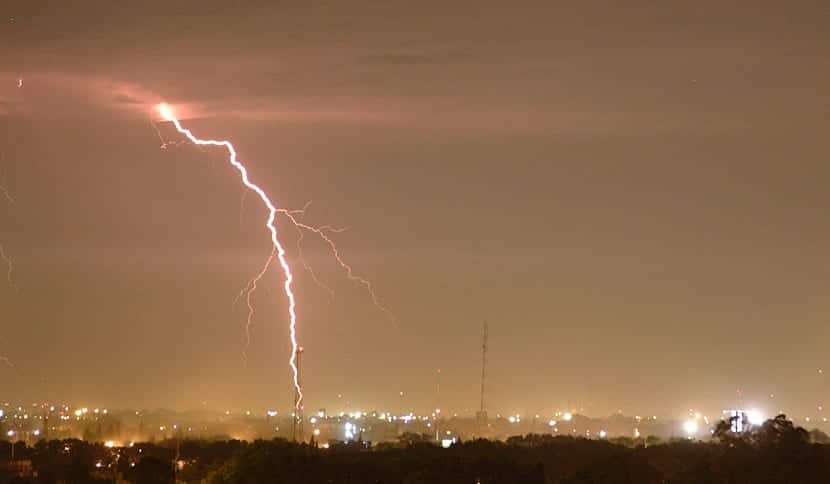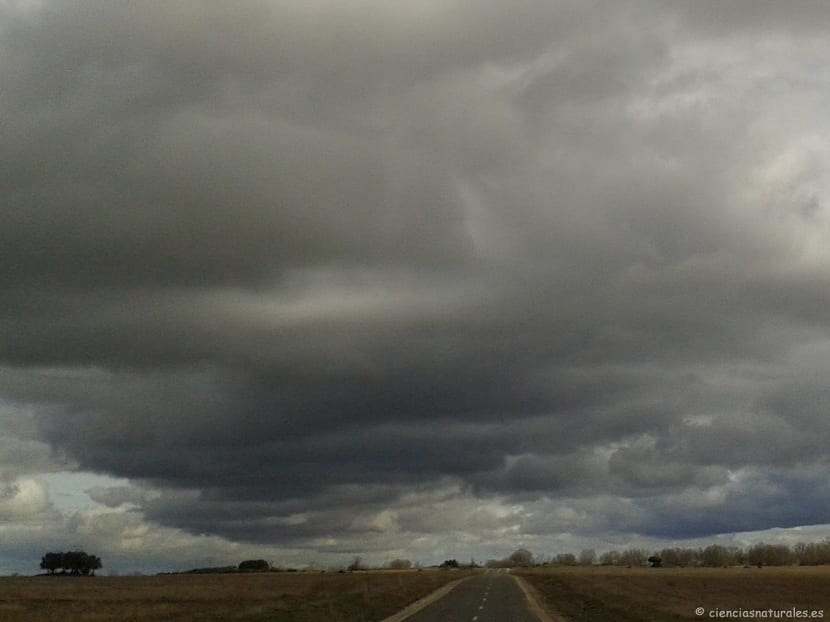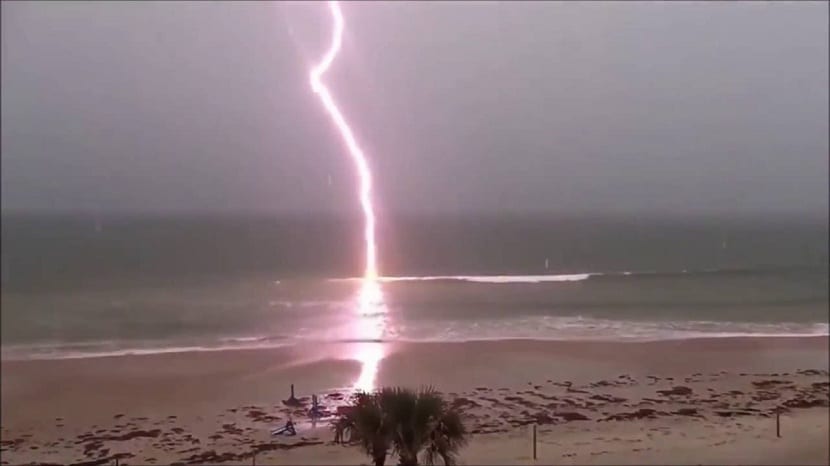
Surely you have ever seen a thunder and lightning storm and you are one of two types of people when faced with these meteorological phenomena: you either hate them or you love them. Lightning and thunder storms They are usually spectacular phenomena worth capturing with our cameras and video cameras. If they take place at night, they are even more spectacular and incredibly beautiful.
However, do you know why they happen and what is the best way to protect yourself against it? If you want to learn more about storms and lightning, this is your post 🙂
Definition of storm

The storm is nothing more than a violent disturbance in the layer of the atmosphere that is characterized by having heavy rain, gusts of wind, lightning and thunder and even hail sometimes. In general, they are meteorological events that last a short time (about 20 minutes or 1 hour at most) and affect only a specific area.
These storms occur more frequently in places where temperatures are lower or temperate. The world record for the area with the most storms per year is taken by the island of Java, with more than 225 days of storms and lightning per year.
How do you create a storm?

It is fascinating to see a lightning storm or, on the contrary, something very dangerous if you are in more unfavorable areas. Storms form when the atmosphere takes place a strong upward air current.
As hot surface air rises, it runs into layers of cooler air at altitude and condenses into vertically developing clouds. These clouds start out as cumulus humilis and they turn from that fluffy cotton look. As the atmospheric instability caused by the upward air current grows, the vertically developing clouds transform into cumulus congestus.
When the cloud becomes too large, it is called cumulonimbus and discharge all the stored water.
The formation of a storm is divided into three phases:
First phase

The upward air currents cause a cloud of clouds to form. up to 7.500 meters of altitude. The cloud accumulates drops of water and takes shape.
Second stage

When the cloud grows even higher, they reach heights of up to 12.000 meters, occupying practically the entire region of the troposphere. Due to the contrast of temperatures that takes place between the lower layer of the rising air and the layer at altitude where the cloud forms, in the interior they can be recorded up to temperatures of -40 and -50 degrees.
Rising air currents can reach speeds of up to 100 kilometers per hour. When they collide with the cloud, the air droplets inside them condense and are stored in drops of icy water, ice crystals and even snowflakes, depending on the ambient temperatures.
When they fall under their own weight, they cool down the hot air in the lower layers and, therefore, make it heavier. It is then when a descending air current is formed at a speed of about 50 kilometers per hour that carries all the rain and / or snow towards the earth's surface. This is the reason why most of the raindrops that occur in a storm are larger.
Third phase

When the cloud is fully loaded with water droplets and there is the downward air current, fully downloads in minutes.
As the cloud loses water and volume, the downward air current ceases and the cloud, for its highest part, is dispersed by the wind. This is the reason why storms are usually short-lived, but very intense.
Storms and lightning

One of the phenomena that takes place during storms is lightning. The rays are nothing but short shocks of electricity that take place inside the cloud, between cloud and cloud or from a cloud to a point on the ground. For a beam to strike the ground, it must be elevated and there must be an element that stands out from the rest.
The intensity of lightning is a thousand times higher than the current we have at home. If we are capable of being electrocuted by the discharges of a plug, imagine what lightning can do. However, there are many cases in which people who have been struck by lightning, they have survived. This is because the duration of the beam is very short, so its intensity is not fatal.
They are rays are capable of propagating at about 15.000 kilometers per hour and measure long about one kilometer. Up to five kilometers long lightning has been recorded in very large storms.
On the other hand, we have thunder. Thunder is the explosion that causes electrical discharge that is able to rumble for a long time due to the echoes that form between clouds, the ground and mountains. The larger and denser the clouds, the greater the echo that occurs between them.
Because lightning travels faster because of the speed of light, we see the lightning before we hear the thunder. However, this occurs simultaneously.
How lightning is generated
Lightning can be perfectly represented by the phenomenon that occurs in our home when we wrongly connect the positive poles of a power outlet. When we do this, we create a short circuit that blows the leads.
That brief spark that we see when causing the short circuit is practically a lightning bolt but on a small scale. This phenomenon takes place between clouds that have an opposite electrical charge. In the interior of a cloud there are opposite poles at the ends that are concentrated in positive and negative charges and between the clouds and the ground.
When this occurs, lightning occurs within the cloud, between cloud and cloud and between cloud and earth. Each discharge lasts half a second and, although it gives the illusion of only being lightning, there are thousands of downloads.
With this information you can learn more about the formation of storms and the reason for their being.